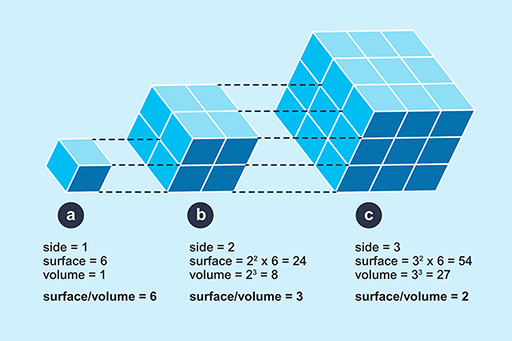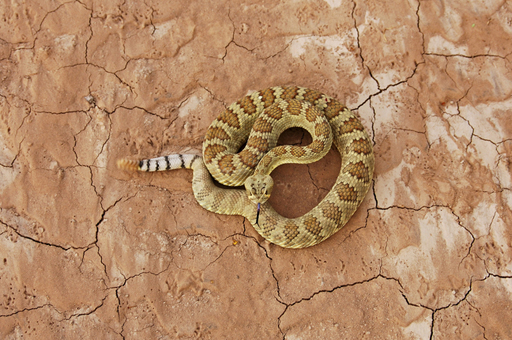1.1 On size and shape
The ways in which animals interact with the environment is affected by their body size and shape.
One way to classify desert animals is in terms of the range of body sizes and the rate of evaporation.
The logic of this classification can be appreciated by the following exercise. If you represent a small animal by a cube, and then make a larger scale model of it twice natural size, the linear dimensions of the larger animal would all be twice as large (Figure 4).
However, the surface area of the model would not be increased by a factor of 2, nor would the volume, as can be seen by comparing Figure 4a and 4b. If the linear dimensions double; the surface area increases by a factor of 4 (22) and the volume by a factor of 8 (23). So the ratio of surface area to volume is lower in a large animal than a smaller one. Since heat is transferred at the surface, a small animal has greater potential for rapidly gaining and losing heat than a larger one because of its relatively large surface area. A smaller animal also has greater relative potential for evaporative water loss through its large area of skin, relative to its volume.
However, animals are not cube-shaped, and certain desert species have features that can increase their surface area relative to their volume.
Activity 1
Consider this question and note your answers in the box below
What desert animals that you know of from your general knowledge have features that increase their surface area relative to their volume?
Answer
An obvious adaptation that increases surface are is large ears and so you might have chosen the desert fox, jerboa, the jack rabbit or the elephant. A more unusual adaptation is found in the frilled neck lizard, which has a flap of skin that it can extend both for display and to regulate body temperature.


